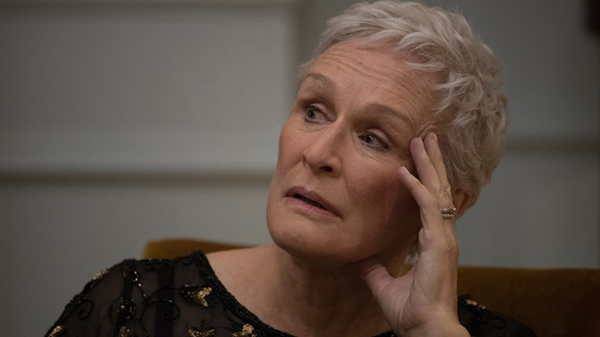READ ME is a platform for female-led writing on film hosted by Girls on Tops. Louisa Maycock (@louisamaycock) is Commissioning Editor and Ella Kemp (@efekemp) is Contributing Editor.
The era of grotesque horror gives way to shades of rage, both quiet and precise, for the onscreen woman. From hagsploitation to a subversion of the heist, Becky Matthews explains to what extent angry women are truly all the rage.
Female rage fuelled the horror sub-genre ‘Hagsploitatation’ also known as ‘Hag Horror’ or ‘Grande Dame Guignol’ cinema. The name ‘Hagsploitation’ is as telling as it is unflattering. Considered too old for ingenue or femme fatale roles, is it really surprising that Bette Davis, Joan Crawford and Olivia de Havilland traded glamour for gothic horror? For an actress over 50 in Hollywood in the 1960s and ‘70s, to stay employed meant go hag or go home.
The roles were often two-dimensional, but not dull. Female characters walked the line between victim and villain, sometimes interchangeably. Either way, they did a lot of screaming, wild-eyed and turned up to eleven. In pulpy melodramas, female relatives plotted against each other, and women took bloody revenge on unfaithful men and their lovers.
What Ever Happened to Baby Jane? was the first, and remains the most famous example of hagsploitation, with anger burning through from the start. Robert Aldrich’s 1962 film depicts a bitter, increasingly violent rivalry between two sisters, both former actresses, who are trapped by circumstances in a decaying mansion.
As Bette Davis’ daubs her face with layers of white paint, the action speaks volumes about her rage, within and beyond her character. As a construct of ‘Baby Jane’ Hudson’s former child-star persona, it’s mask-like, giving her an grotesque and infantilised appearance (along with ragged ringlets and old vaudeville clothing) that reveals her deteriorating mental state. For Davis herself, it’s a literal face-off with Hollywood on how older women were viewed and treated.
In Hush Hush, Sweet Charlotte, Davis returns and recoils in her chair as Charlotte Hollis, like a snake ready to spit venom before unleashing a diatribe on her cousin Miriam (Olivia de Havilland) at the dinner table. Davis plays an ageing woman, shunned by the community and haunted by a dark secret. Later on, the duplicitous and gaslighting Miriam corners Charlotte in a car and kicks the maid downstairs.
Rage in these films, while extreme and often cartoonish, comes down to survival. Women in ‘hagsploitation’ films are trapped both literally and figuratively by their pasts, and within their own home. Decades later, horror has never been a more fertile ground for female storytellers. A 2016 study found it to be the only genre where women are on screen more than men, and recent female-led horror films speak to the female experience.
But it’s not just horror that puts angry women under the spotlight. Different shades of rage cut across genres, from big-budget thrillers such as Widows, to more intimate character studies like The Wife and Lady Bird – three very different films released in 2018, written (or co-written) by female screenwriters, with women over the age of 50 in prominent roles.
In Greta Gerwig’s Lady Bird, teenaged Christine ‘Lady Bird’ Macpherson (Saoirse Ronan) and her mother Marion (Laurie Metcalf) clash in frequent, barbed exchanges. But Marion’s silence, as she furiously scrubs dishes, refusing to look at Lady Bird, who knows she’s in the wrong and is begging her Mom to talk to her, says so much more. The cold shoulder speaks far louder of a parent’s disappointment than heightened dialogue. Here, the kitchen sink isn’t a reductive device to show motherly domesticity, it’s a throwdown to feeling undervalued by her child.
Quiet, decade-spanning rage comes to a head in Glenn Close’s performance as the titular character in The Wife, Joan Castelman, which also comes through her delivery of terse dialogue by writer Jane Anderson. When asked what her job is during a dinner honouring her author husband Joe, without missing a beat she says “I am a Kingmaker”. It’s a ‘mic drop’ moment. But the bigger clues to her anger are written across her face, like the side-eyed glance at her husband when he says “My wife doesn’t write”. A look that’s entirely lost on Joe.
Women aren’t typically given much to do in heist movies, but in Steve McQueen’s 2018 film Widows (co-written by Gillian Flynn) the need to survive launches them into the centre of the action. As with Joan, Veronica (Viola Davis) deals with life in the shadow of a famous, or in this case, infamous husband. There is precision and purpose in every expression of Davis’ rage. From the way she adjusts her suit and quietly exhales after screaming, floored and bent double by grief in her bathroom, to the way she rounds up her fellow widows like a military operation. Externally, Veronica is cool, steely-eyed and immaculately dressed in crisp monochrome. The only place she lets down her guard is in her apartment, her tiny dog is the only witness to the pain she’s carried for years.
Angry women in contemporary cinema give voice to the internalised rage that stems from being overlooked and undermined for years, and the fallout that happens as a result. Richer source material and women telling their own stories has shifted the point of view. Now we get to see more women as they see themselves too.
Becky Matthews(@bec_bebop) is a freelance content writer and scriptwriter based in London. She is obsessed with tales of old Hollywood, Wes Anderson, the writing talent of Carrie Fisher and Nora Ephron and tragi-comedy. Feminism, film and funny are her favourite three F-words, which she puts into her writing for London Cheapo and Live For Films.



